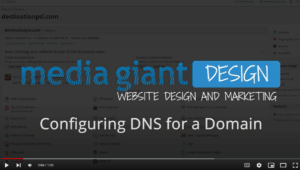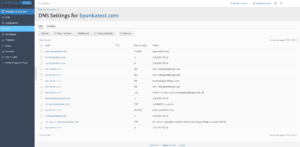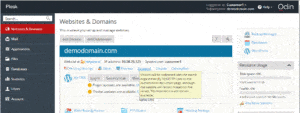You can create and remove databases in Websites & Domains > Databases.
You can create a database by specifying its name. If your subscription grants you the corresponding permission, you can choose a database type and the database server on which the database should be created.
You can select a website on which the database will be used in the Related site box. This is convenient if you have a lot of sites and databases, because you will see which database is used by which site right on the Databases page.
DATABASE USERS
A database must have at least one user account associated with it. Otherwise, it will be impossible to access the database. You can create a database user while creating a database by selecting the Create a database user checkbox. Alternatively, you can select a user later, for example, if you want to use one of the existing user accounts. For more information, see Database User Accounts.
To use the database user for accessing any of your databases, select User has access to all databases within the selected subscription.
If you have corresponding permissions, you can set access control rules for a database user. Learn more in Setting Up Custom Access Rules.
HOW TO REMOVE A DATABASE
To remove a database, click the link Remove Database under this database in Websites & Domains > Databases. Note that you can remove only the databases and database users that are not used by installed APS apps. If the link is not available, it means that this database is used by an application and you can remove it only by removing the respective application.
Accessing Databases
After you have created a database and assigned a database user to it, you can access it from Plesk using the corresponding link in Websites & Domains > Databases. The links differ depending on the database type:
- phpMyAdmin for MySQL databases
- pgMyAdmin for PostgreSQL databases
- myLittleAdmin for SQL Server databases.
Note: If the link is missing, contact your hosting provider.
When accessing a database with these tools, Plesk automatically uses the corresponding database user credentials.
If you want to access your database using other tools (such as SQL Server Management Studio) or want to give other applications access to it, you will need to provide these tools and applications with the following:
- To connect to MySQL and PostgreSQL, you will need to provide the host name (or IP address) and the database user login and password. To view this information, click the Connection Info link under the database name.
- To connect to Microsoft SQL Server, you will also need to specify the Microsoft SQL Server instance. For Microsoft SQL Server 2012, 2014 and 2016, Plesk uses the named instances (
MSSQLSERVER2012,MSSQLSERVER2014,MSSQLSERVER2016respectively). For example, the host can be specified asmydomain.com\MSSQLSERVER2012or123.123.123.123\MSSQLSERVER2012.





 .
.

